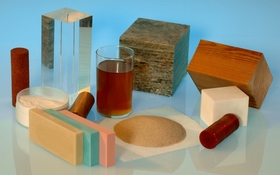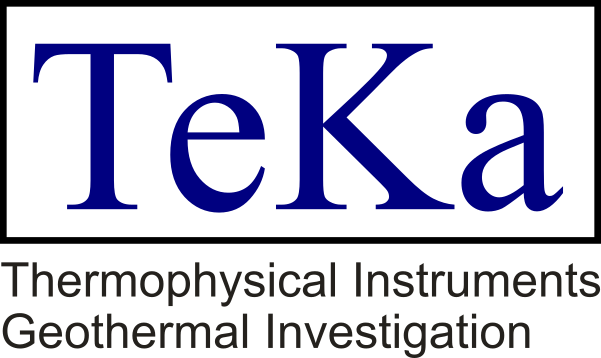Thermal Conductivity Contract Testing
We measure the thermal conductivity / thermal resistivity of your samples in our laboratory in Berlin, Germany. We help you with collecting or producing the samples and prepare them for measurement, or we provide the complete sample production and preparation for the materials you send us. Please contact us for assistance with planning your measuring tasks, or request a quotation for the sample type and amount you would like to test.
![arrow]() Measuring Method
Measuring Method
 We measure thermal conductivity / thermal resistivity in the range of 0.1 to 10 W/mK with an accuracy of ± 2%. Depending on sample type and size we either use the standard needle probe according to ASTM D5334-22a / ISO 22007-1 or a modified needle probe for plane surfaces (ISRM Suggested Method DOI 10.1007/s00603-016-1070-5 for determining thermal conductivity of rocks). Thermal resistivity is calculated as the reciprocal of the measured thermal conductivity.
We measure thermal conductivity / thermal resistivity in the range of 0.1 to 10 W/mK with an accuracy of ± 2%. Depending on sample type and size we either use the standard needle probe according to ASTM D5334-22a / ISO 22007-1 or a modified needle probe for plane surfaces (ISRM Suggested Method DOI 10.1007/s00603-016-1070-5 for determining thermal conductivity of rocks). Thermal resistivity is calculated as the reciprocal of the measured thermal conductivity.
Needle probes are suitable for soft materials or for solid samples where pre-drilling is possible. To prepare cured materials or samples that are hardening, like dried soil, guiding tubes can be used. The tubes are inserted while the material is still soft and provide measuring positions for easy needle insertion.
The surface probe, designed for very hard or brittle materials, just requires a plane and smooth sample surface. Combined with a matching sample container it is used also to determine the matrix thermal conductivity of powders.
![arrow]() Materials
Materials

![arrow]() Sample Shape and Size
Sample Shape and Size
Samples can be of any shape and dimensions as long as they meet the minimum size requirements. In smaller samples the heat wave produced during the measurement may be reflected by the sample boundaries and could disturb the test. Needle probe (Standard VLQ) tests using the given minimum sample sizes comply with ASTM D5334.
| Probe | Minimum Ø | Minimum height | Accuracy |
| Standard VLQ (70 mm) | 40 mm | 85 mm | ± 2 % |
| Standard VLQ (60 mm) | 40 mm | 75 mm | ± 2 % |
| Mini VLQ (VLQ 50) | 40 mm | 60 mm | ± 5 % |
| Standard HLQ | 90 mm | 20 mm | ± 2 % |
| Mini HLQ | 50 mm | 20 mm | ± 5 % |


